Today’s Current Affairs: 15th Jul 2023 for UPSC IAS exams, State PSC exams, SSC CGL, State SSC, RRB, Railways, Banking Exam & IBPS, etc
Table of Contents
BHARAT Campaign:
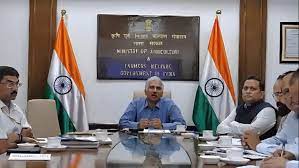
Ministry of Agriculture & Farmers Welfare launched a new campaign for banks under Agriculture Infrastructure Fund titled BHARAT (Banks Heralding Accelerated Rural & Agriculture Transformation).
- BHARAT campaign is a one month-long Campaign with a target of Rs 7200 crore.
- It aims to get active involvement and support of members of commercial Banks in the public and private sector, Regional Rural Banks, Small Finance Banks, NBFCs and select cooperative Banks in promoting the Scheme of Agriculture Infrastructure Fund.
- Agriculture Infrastructure Fund is a Central Sector Scheme which was launched in 2020
- The scheme shall provide a medium – long term debt financing facility for investment in viable projects for post-harvest management Infrastructure and community farming assets through interest subvention and financial support.
- The duration of the Scheme shall be from FY2020 to FY2032 (10 years).
- All loans under this financing facility will have interest subvention of 3% per annum up to a limit of Rs. 2 crores. This subvention will be available for a maximum period of seven years.
- Further, credit guarantee coverage will be available for eligible borrowers from this financing facility under Credit Guarantee Fund Trust for Micro and Small Enterprises (CGTMSE) scheme for a loan up to Rs. 2 crores. The fee for this coverage will be paid by the Government.
Tunicate Fossil Species:
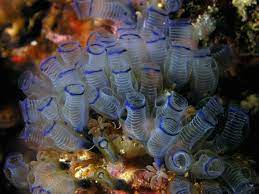
Researchers described a 500-million-year-old tunicate fossil species, which suggested that the modern tunicate body plan was already established soon after the Cambrian Explosion.
- The new fossil, named Megasiphon thylakos, revealed that ancestral tunicates lived as stationary, filter-feeding adults and likely underwent metamorphosis from a tadpole-like larva.
- These are commonly called sea squirts which are a group of marine animals.
- They spend most of their lives attached to docks, rocks or the undersides of boats.
- About 3,000 species of tunicate exist in the world’s oceans, living mostly in shallow water.
- They are a species of marine invertebrates with an evolutionary history from at least 500 million years ago.
- Researchers are interested in them as they are the closest relatives of vertebrates, which includes fish, mammals, and people.
- There are two main tunicate lineages namely;
- Ascidiaceans: They are often called “sea squirts and most ascidiaceans begin their lives looking like a tadpole and mobile, then metamorph into a barrel-shaped adult with two siphons. They live their adult life attached to the seafloor.
- Appendicularias: They retain the look of a tadpole as they grow to adults and swim freely in the upper waters.
- These seem extremely far removed from vertebrates.
Kaas Plateau : Climate And Environmental Changes
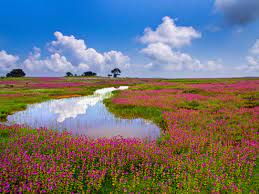
A recent study by the Agharkar Research Institute (ARI), Pune along with the National Centre for Earth Sciences, Thiruvananthapuram decoded climate and environmental changes on Kaas Plateau.
Key findings:
- Sediment profile dating back to 8000 years which helped decode climatic signatures indicated a relatively reduced rainfall and weak southwest monsoon during the late Holocene (around 2827 years BP).
- The seasonal lake in the Kaas Plateau is probably a product of an erosional localized shallow depression on a pediment (rock debris) developed over the crust.
- During the early to mid-Holocene, at around 8664 years ago, pollen, as well as diatom data, indicated a change in the climate from freshwater to drier conditions with low rainfall.
- Surprisingly, there was a significant rise in the number of diatoms in between.
- This suggests a major shift in the Indian summer Monsoon activity during that time, possibly resulting in intermittent humid periods amidst the dry spells.
- There was a decrease in rainfall and a weakened southwest Monsoon during the late Holocene (around 2827 years BP).
- During the recent past (around last 1000 years), pollen, as well as the presence of a high number of planktonic and pollution-tolerant diatom taxa indicated lake eutrophication, possibly due to human impact and cattle/livestock farming in the catchment.
Kaas Plateau:
- It is nestled in the Western Ghats is about 140 km from Pune.
- It is part of the Western Ghats which was declared as world natural heritage site by United Nations Educational, Scientific and Cultural Organisation (UNESCO) in 2012
- It is known as Kaas Pathar in Marathi, its name is derived from the Kaasa tree, botanically known as Elaeocarpus glandulosus (rudraksha family).
Leopard 2 Battle Tank:
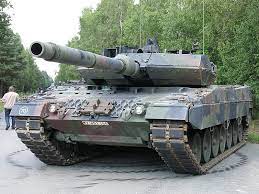
Italy is planning to buy German-made Leopard 2 battle tanks to boost its ground forces in the wake of the Russian invasion of Ukraine
- Leopard 2 battle tank is a German made main battle tank.
- Developed by German weapons manufacturer Krauss-Maffei Wegmann (KMW).
- Leopard was first produced in the late 1990s for the West German army in response to Soviet threats during the Cold War.
- The Leopard 2 tanks are mainly used by the German military. More than a dozen countries in Europe as well as other countries like Canada are also using these tanks.
- It has a crew of four and a range of about 500 kilometres (310 miles).
- Weight: 55 tonnes
- Top speed: 68 km/h (42mph).
- Its main weapon is a 120mm smooth bore gun, and it has a fully-digital fire-control system.
- It is also armed with two coaxial light machine guns.
- They also provide “all-round protection” for troops from threats such as mines, anti-tank fire, and improvised explosive devices
Hwasong-18: Intercontinental Ballistic Missile
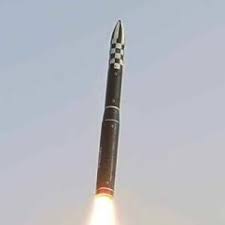
North Korea recently tested its latest Hwasong-18 intercontinental ballistic missile (ICBM).
- Hwasong-18 is a type of solid-fuel intercontinental ballistic missile (ICBM) developed by North Korea.
- It is North Korea’s first ICBM to use solid-fuel, which allows for faster launches.
- Liquid propellants provide greater propulsive thrust and power, but require more complex technology and extra weight.
- Solid fuel is dense and burns quite quickly, generating thrust over a short time.
- Solid fuel can remain in storage for an extended period without degrading or breaking down – a common issue with liquid fuel.
- Solid-fuel missiles are easier and safer to operate, and require less logistical support, making them harder to detect and more survivable than liquid-fuel weapons.
- Ballistic Missile is a rocket-propelled self-guided strategic-weapons system that follows a ballistic trajectory to deliver a payload from its launch site to a predetermined target.
- Ballistic missiles are powered initially by a rocket or series of rockets in stages, but then follow an unpowered trajectory that arches upwards before descending to reach its intended target.
The State Of Food Security And Nutrition In The World 2023 Report:

The State of Food Security and Nutrition in the World 2023 report was released recently with the theme “Urbanisation, agrifood systems transformation, and healthy diets across the rural-urban continuum”.
Findings Of The 2023 Report:
- Global Hunger Over 122 million people are facing hunger in the world since 2019 due to the pandemic and repeated weather shocks and conflicts, including the war in Ukraine.
- Nutritional Access ~2.4 billion individuals did not have consistent access to nutritious, safe, and sufficient food in 2022.
- Child Malnutrition Child Malnutrition: In 2021, 22.3% (148.1 million) children were stunted (too short for their age), 6.8% (45 million) were wasted (too thin for their height), and 5.6% (37 million) were overweight.
- Urbanisation’s Impact on Diet As urbanisation accelerates, there is a noticeable increase in the consumption of processed and convenience foods, leading to a spike in overweight and obesity rates across urban, peri-urban, and rural areas.
- Rural Dependence on Global Markets Previously self-sustaining rural regions, especially in Africa and Asia, are now found to be increasingly dependent on national and global food markets.
State of Food Security and Nutrition in the World Report:
- It is an annual flagship report jointly prepared by the –
- Food and Agriculture Organisation of the United Nations (FAO),
- International Fund for Agricultural Development (IFAD),
- United Nations Children’s Fund (UNICEF),
- World Food Programme (WFP) and
- World Health Organisation (WHO)
- It aims to inform on progress towards ending hunger, achieving food security and improving nutrition and to provide an in-depth analysis of key challenges for achieving this goal in the context of the SDG.
- The report targets a wide audience, including policy-makers, international organisations, academic institutions and the general public.
Most Attractive Emerging Market For Investment:

According to Invesco Global Sovereign Asset Management Study by Invesco (an independent global investment management firm), India has surpassed China to become the most attractive emerging market for investment in 2023.
- The report emphasizes India’s attractiveness to sovereign wealth funds due to its strong demographics, political stability, and proactive regulation.
Highlights of the Report:
- India is ranked as the most attractive emerging market for investing in emerging market debt.
- India offers attractive yields, a favorable currency outlook, and strong macroeconomic fundamentals for debt investors.
- India is ranked among the top destinations for increasing exposure in both public and private markets.
- India and South Korea are the most preferred markets for increasing exposure in public equities.
- India and Brazil are the most favored markets for increasing exposure in private equity.
- India, along with Mexico and Brazil, is benefiting from increased foreign direct investment, supporting currencies, and domestic assets while funding current account deficits.
- The report acknowledged the challenges and risks of investing in emerging markets and advised sovereign investors to carefully assess and manage them.
Grand Cross Of The Legion Of Honour:

Prime Minister Shri Narendra Modi was conferred with the Grand Cross of the Legion of Honour, France’s highest award today by, the President of the Republic of France.
- The Legion of Honour is the highest French decoration given to the most deserving citizens in all fields of activity.
- Established by former French emperor Napoleon Bonaparte in 1802, the Legion of Honour is divided into five degrees (lower to higher) – Knight, Officer, Commander, Grand Officer and Grand Cross. The PM was awarded the fifth honour.
- The colour of the ribbon is red and the badge is a five-armed Maltese asterisk hung on an oak and laurel wreath. On the obverse is the effigy of the Republic and on the reverse two tricolour flags surrounded by the motto ‘Honor and Fatherland’ written in French.
- Although the membership to Legion of Honour is restricted to French nationals, foreign nationals who serve France or uphold its ideals may also be given a distinction of the Legion.
Third G20 Sherpas Meet:
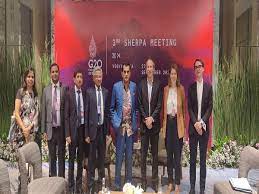
The third Sherpas meeting under India’s G20 Presidency began in Hampi, Karnataka recently.
- A Sherpa is a personal representative of the leader of a member country at an international Summit meeting such as the G20.
- The Sherpa engages in planning, negotiation and implementation tasks through the Summit.
- They coordinate the agenda, seek consensus at the highest political levels, and participate in a series of pre-Summit consultations to help negotiate their leaders’ positions.
- Sherpas are career diplomats or senior government officials appointed by the leaders of their countries.
- There is only one Sherpa per Summit for each member country; he/she is assisted by several sous Sherpas.
G20 Sherpa Meeting under India’s G20 Presidency:
- The former CEO of NITI Aayog, Amitabh Kant is the G20 Sherpa from India.
- The 1st Sherpa Meeting of India’s G20 Presidency was held on 04 December 2022, in Udaipur Rajasthan.
- The Second G20 Sherpas meeting under India’s G20 Presidency, chaired by India’s G20 Sherpa Shri Amitabh Kant took place in the picturesque village of Kumarakom, Kerala, from March 30 to April 2, 2023.
Hero Asian Champions Trophy 2023:
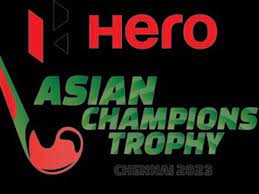
The Hero Asian Champions Trophy 2023, one of the most anticipated hockey tournaments, is set to take place in Chennai, Tamil Nadu.
- The prestigious trophy was unveiled by Anurag Thakur, the Minister of Youth Affairs and Sports, in a grand ceremony held in New Delhi.
- Alongside the trophy, Thakur also launched the ‘Pass the Ball Trophy Tour’ campaign, which aims to ignite excitement and passion among hockey fans across India.
- Union Minister of Youth Affairs and Sports unveiled the magnificent trophy for the Hero Asian Champions Trophy 2023.
- The event also marked the launch of the ‘Pass the Ball Trophy Tour’ campaign, which seeks to engage and inspire young athletes to dream of representing Team India in the future.
- Thakur expressed his belief that India would make history if it wins the tournament for the fourth time.
Chandrayaan-3 : Launch News
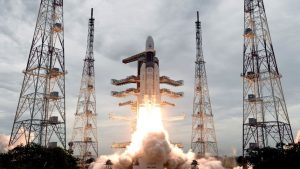
ISRO launched India’s third lunar mission Chandrayaan-3 perched on GSLV Mark 3 heavy-lift launch vehicle, named ‘Bahubali’ rocket, at 2.35 p.m. from Sri Harikota
- This is India’s second attempt at soft-landing robotic instruments on the lunar surface after the previous attempt, Chandrayaan-2, failed in 2019.
- Thus far, only three countries, the U.S., Russia and China, have successfully soft-landed on the moon.
- Chandrayaan-3 is the third lunar exploration mission by the Indian Space Research Organisation (ISRO).
- It consists of a lander and the Pragyan rover similar to Chandrayaan-2, but does not have an orbiter.
- Its propulsion module behaves like a communication relay satellite.
- The propulsion module carries the lander and rover configuration until the spacecraft is in a 100 km lunar orbit.
- ISRO has set three main objectives for the Chandrayaan-3 mission, which include:
- Getting a lander safe and soft and perfect landing on the surface of the Moon.
- Observing and demonstrating the rover’s loitering capabilities on the Moon
- In-site scientific observation making scientific experiments on the chemical and natural elements, soil, water, etc. available on the surface of the Moon to better understand and practice the composition of the Moon.
- Interplanetary refers to the development and demonstration of new technologies required for missions between two planets.
- Chandrayaan-3 comprises three main components:
- Propulsion Module: The propulsion module will carry the lander and rover configuration till 100 km lunar orbit.
- It is a box-like structure with one large solar panel mounted on one side and a large cylinder on top (the Intermodular Adapter Cone) that acts as a mounting structure for the lander.
- Lander: The lander is responsible for the soft landing on the Moon. It is also box-shaped, with four landing legs and four landing thrusters of 800 newtons each. It will carry the rover and various scientific instruments to perform in-site analysis.
- The lander for Chandrayaan-3 will have only four throttle-able engines,unlike Vikram on Chandrayaan-2 which had five 800 Newtons engines with a fifth one being centrally mounted with a fixed thrust.
- Additionally, the Chandrayaan-3 lander will be equipped with a Laser Doppler Velocimeter (LDV).
- Rover:
- Six-wheeled design
- Weight of 26 kilograms (57 pounds)
- Range of 500 metres (1,640 feet)
- Scientific instruments including cameras, spectrometers, and a drill
- Expected lifespan of one lunar day (14 Earth days)
- Communication with the lander and ground control team in India
- Propulsion Module: The propulsion module will carry the lander and rover configuration till 100 km lunar orbit.




